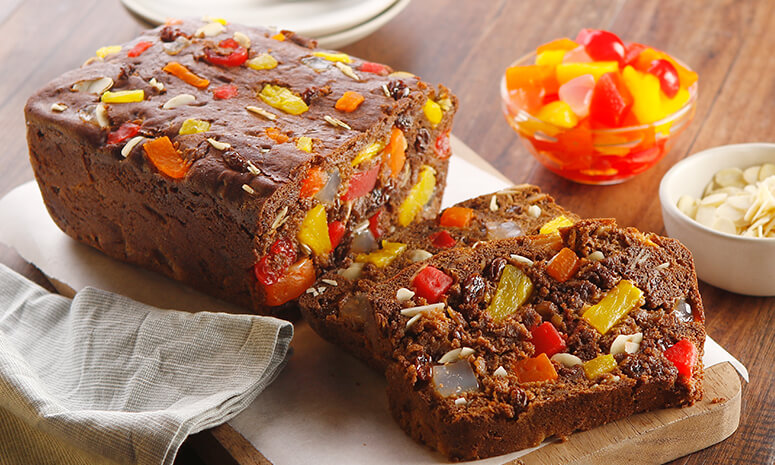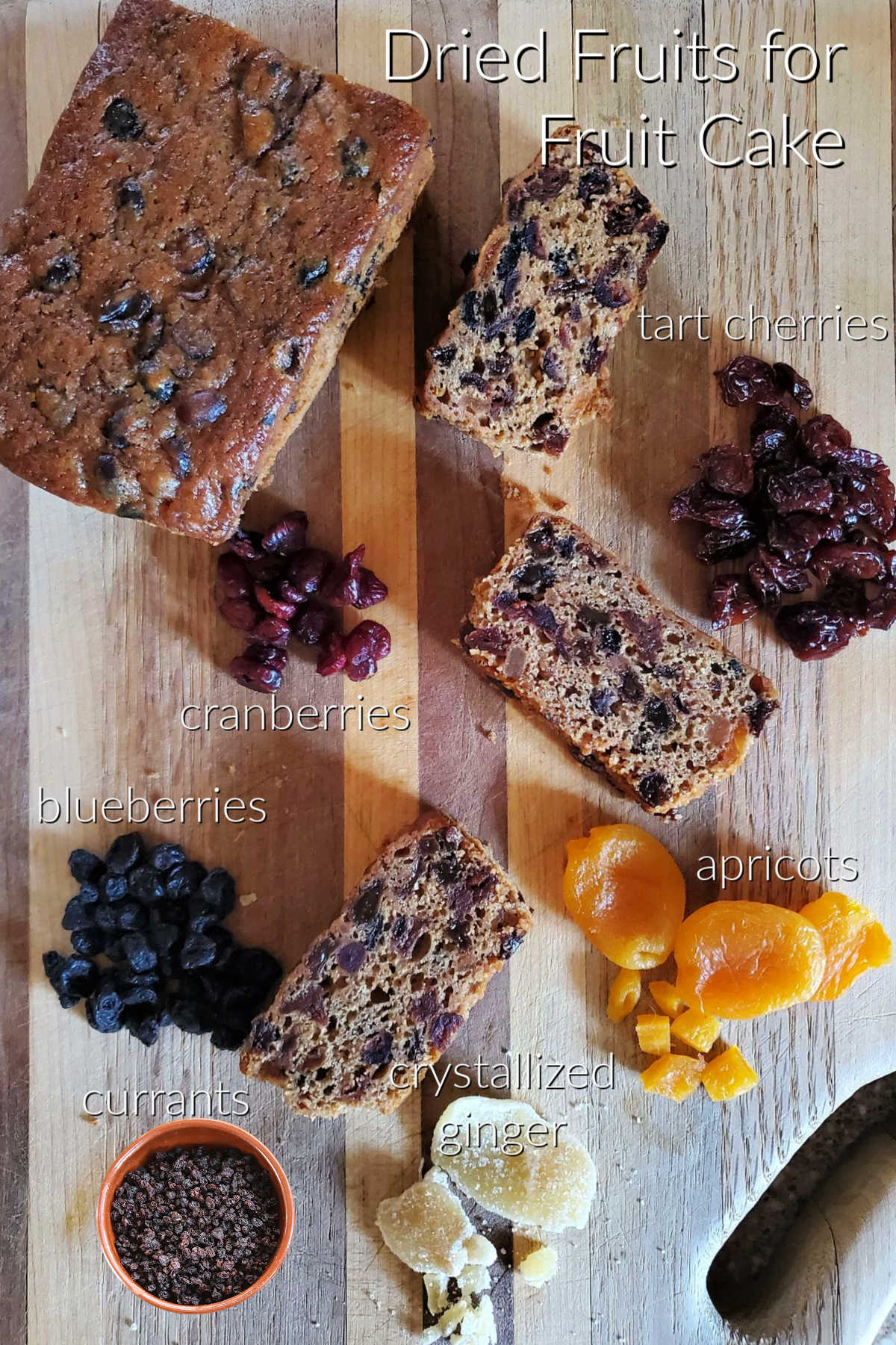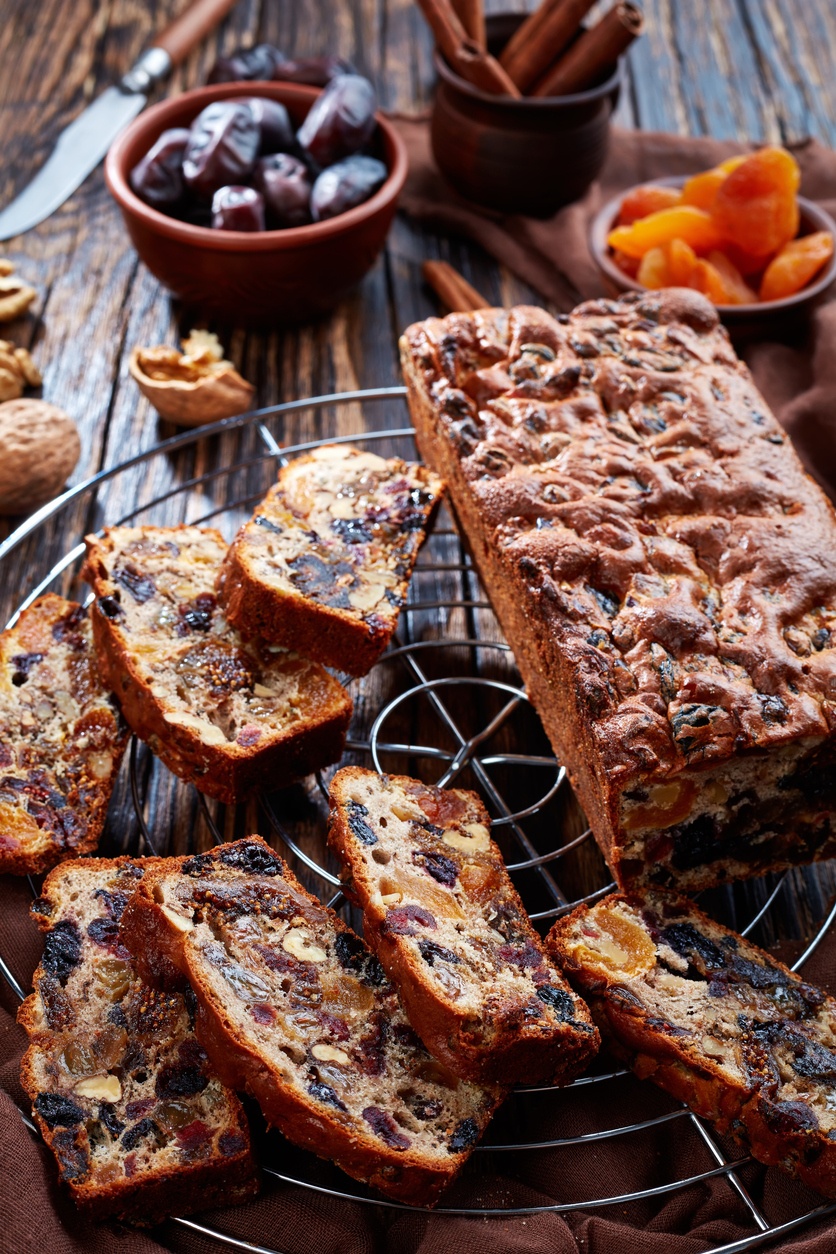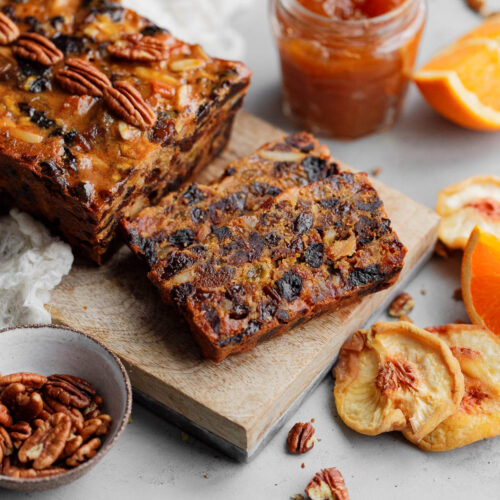Filipino fruit cake is a rich and flavorful dessert that has become a beloved treat during the holiday season, especially around Christmas time. Unlike traditional Western fruit cakes, the Filipino version is known for its moist texture, the generous use of tropical dried fruits, and the optional touch of rum that makes it extra special. If you’re looking to bring a taste of the Philippines into your kitchen this holiday season, this easy Filipino fruit cake recipe is just what you need!
What Is Filipino Fruit Cake?

Filipino fruit cake is a dessert made with butter, sugar, eggs, flour, and a variety of dried fruits and nuts. What sets it apart from Western-style fruit cakes is its lighter, more tender crumb and the use of tropical ingredients like dried mango, papaya, and candied orange peel. Often soaked in rum or brandy, the cake has a rich, aromatic flavor that becomes more complex as it ages. Traditionally, it is baked in advance to allow the flavors to meld, making it an ideal treat to enjoy throughout the holiday season.
Ingredients for the Perfect Filipino Fruit Cake

For the fruit mixture
- 2 cups mixed dried fruits – This can include raisins, currants, chopped dates, and dried apricots. The variety adds depth and sweetness.
- 1 cup candied fruit peel – Chop into small pieces. It brings a bit of citrusy brightness and a chewy texture.
- 1 cup maraschino cherries – Halve them for a pop of color and sweetness.
- 1/2 cup pineapple chunks – Make sure they’re well-drained to avoid excess moisture.
- 1/2 cup walnuts or pecans – Roughly chopped for a delightful crunch. Optional, but adds a nice texture.
- 1 cup dark rum or brandy – For soaking the fruits and adding a lovely depth of flavor.
For the cake batter
- 1 cup unsalted butter – Softened to room temperature for easy mixing.
- 1 cup brown sugar – Packed. This adds a rich, caramel-like sweetness.
- 4 large eggs – They should be at room temperature to blend smoothly.
- 1 1/2 cups all-purpose flour – For structure.
- 1 teaspoon baking powder – To help the cake rise.
- 1/2 teaspoon ground cinnamon – For warm, aromatic flavor.
- 1/2 teaspoon ground nutmeg – Adds a subtle spice.
- 1/4 teaspoon ground allspice – Complements the other spices with its unique taste.
- 1/4 teaspoon salt – Enhances the flavors.
- 1/2 cup molasses – For a rich, deep sweetness.
- 1/2 cup honey – Adds moisture and a floral hint.
- 1 teaspoon vanilla extract – For a touch of classic flavor.
- 1/2 cup chopped almonds – Optional, for additional crunch and flavor.
For the glaze (optional)
- 1/4 cup apricot jam – Adds a glossy finish and a hint of fruity sweetness.
- 2 tablespoons water – To thin the jam for glazing.
Step-by-Step Guide: How to Make Filipino Fruit Cake

Step 1: Prepare the Ingredients
To start, soak 2 cups of mixed dried fruits (like raisins, dried mango, and cherries) in 1/2 cup of rum or fruit juice. Let this mixture sit for at least 2 hours or, for best results, overnight. Soaking the fruits allows them to absorb the liquid, making them plump and juicy, which adds deep, rich flavor to your fruit cake. As the fruits soak, chop 1 cup of mixed nuts (such as walnuts or almonds) and set them aside for later use.
Step 2: Mix the Batter
In a large mixing bowl, cream together 1 cup of softened butter and 1 cup of brown sugar. Mix them on medium speed until the mixture becomes light and fluffy, which takes about 3-5 minutes. This process incorporates air into the batter, giving the cake a tender texture.
Next, add 4 large eggs, one at a time, mixing well after each addition to ensure everything is evenly combined. Stir in 1 teaspoon of vanilla extract for a hint of sweetness and a lovely aroma.
In a separate bowl, whisk together 2 cups of all-purpose flour, 1 teaspoon of baking powder, and 1/2 teaspoon of salt. Gradually add the dry ingredients to the butter mixture, alternating with the soaked dried fruits and any remaining liquid from soaking. Mix gently to avoid overworking the batter, which could make the cake dense.
Once the batter is smooth and well combined, fold in the chopped nuts and any other optional add-ins, such as the zest of 1 orange or 1/4 cup of candied ginger, to enhance the flavor.
Step 3: Bake the Fruit Cake
Preheat your oven to 325°F (160°C). Prepare a 9-inch loaf pan or round cake pan by greasing it with butter or oil and lining it with parchment paper. The parchment paper makes it easier to remove the cake after baking, keeping its shape intact.
Pour the batter into the prepared pan, using a spatula to smooth out the top for even baking. Place the pan in the oven and bake for 60-70 minutes, or until a toothpick inserted into the center comes out clean. If the top of the cake starts to brown too quickly, cover it loosely with aluminum foil to prevent it from burning. The low and slow baking process helps ensure the cake remains moist inside while the outside achieves a golden color.
Step 4: Aging and Storing the Fruit Cake
Once the fruit cake is done baking, allow it to cool in the pan for about 10 minutes before transferring it to a wire rack to cool completely. This prevents the cake from breaking apart and allows it to set.
For a richer, more developed flavor, many people prefer to age their fruit cake. To do this, wrap the cooled cake in plastic wrap and place it in an airtight container. Store it in a cool, dry place, or in the refrigerator. To keep the cake moist and enhance its flavors, brush it with additional rum or fruit juice every few days. This process infuses the cake with more flavor as it ages, making it taste better over time.
A properly stored fruit cake can last up to 3 months. Just make sure to keep it in an airtight container to prevent it from drying out. If you want to enjoy the fruit cake over an even longer period, you can freeze it. Simply wrap it tightly in plastic wrap and then in aluminum foil before placing it in the freezer. When you’re ready to serve, let it thaw at room temperature.
This step-by-step guide will help you create a delicious and festive Filipino fruit cake that’s perfect for the holiday season. Happy baking, and enjoy the rich, tropical flavors of this classic dessert!
Tips for Making the Best Filipino Fruit Cake

Achieving a Moist Texture:
A moist texture is key to a delicious fruit cake, and soaking the dried fruits is a crucial step in achieving this. By soaking the dried fruits in rum or fruit juice for a few hours or overnight, you allow them to absorb moisture, which is then released into the cake during baking. This helps keep the cake from becoming dry and crumbly. Additionally, using room-temperature butter ensures that it creams smoothly with the sugar, creating a lighter batter that results in a tender crumb. This helps the cake remain moist and soft even after baking.
Preventing Fruit from Sinking:
One common challenge with fruit cakes is the dried fruits sinking to the bottom during baking. To avoid this, lightly toss the soaked fruits in a tablespoon of flour before mixing them into the batter. This flour coating helps the fruits to “float” within the batter and be evenly distributed throughout the cake. It’s a simple trick, but it makes a big difference in the appearance and taste of your cake.
Adjusting the Sweetness:
Filipino fruit cake tends to be sweet due to the natural sugars in the dried fruits like raisins, dried mango, and cherries. If you find it too sweet for your taste, consider reducing the amount of added sugar in the batter slightly. You can also balance out the sweetness by incorporating a mix of sweet and tart fruits, such as cranberries or dried apricots. This adds a pleasant contrast of flavors, making the cake less overwhelmingly sweet while still keeping it flavorful.
FAQ
Can I make Filipino fruit cake without alcohol?
Yes, you can use fruit juice as a substitute for rum or brandy when soaking the dried fruits.
How long does Filipino fruit cake last?
When properly stored in an airtight container, it can last up to 3 months or longer if refrigerated.
Why is my fruit cake dry?
A dry fruit cake usually results from overbaking or not adding enough liquid when mixing the batter. Check your oven temperature and ensure the batter is moist before baking.
Can I freeze Filipino fruit cake?
Yes, fruit cake freezes well. Wrap it tightly in plastic wrap and place it in a freezer-safe bag for up to 6 months.
What are the best fruits to use in Filipino fruit cake?
Dried mango, raisins, prunes, cherries, and candied orange peel are popular choices that complement the Filipino twist on this classic dessert.
